Endives are the most refined leaf of the lettuce world, making them a staple in fancy restaurants and an essential accessory in culinary photography. Endives add sharpness and bite to fresh salads and a mellow sweetness to dishes when cooked.
They are, however, often shrouded in mystery as the overwhelming variety of endives can intimidate both cooks and growers. Hopefully, we will show you just how simple, accessible, and delicious endives of all types can be.
More...
Family: | Asteraceae |
|---|---|
Genus: | Cichorium |
Species: | C. endivia |
Common names: | Curly endives |
Origin: | Mediterranean |
Location: | Outdoor |
Type: | Herbaceous perennial, edible plant, flowering plant |
Growth: | Up to 1.5m tall in flower |
Sun requirements: | Full sun to light shade |
Foliage colour: | Green |
Flower colour: | Blue or purple |
Flowering: | Summer |
Edible parts: | Leaves, flowers and root |
Maintenance level: | Medium-high |
Poisonous for pets: | Leaves, flowers and roots are safe for pets |
What are Endives?
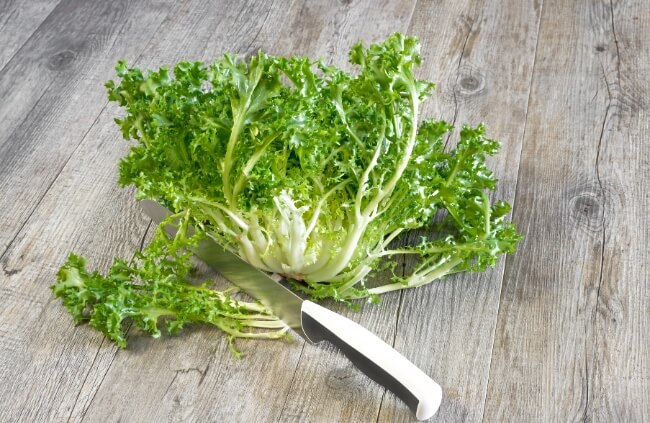
Endives are a leafy vegetable in the genus Cichorium. Some varieties are herbaceous perennials and some biennial, but they are all edible. Technically it can get a little confusing as supermarkets can label most chicory as endives when that’s not necessarily true.
There are two main types of endives in the Cichorium genus: C. endivia and C. intybus. This article will focus on the former.
Cichorium endivia is referred to as the true endive and grows as an evergreen biennial, although it’s often cultivated as an annual to get the best quality of leaf.
There are two distinct varieties of this species, ‘Escarole’ (var. latifolia) and ‘Frisée’ (var. crispum). All have the characteristic bitter, endive flavour and have crisp leaves.
The wild endive, Cichorium pumilum is a different species than C. endivia but still within the Chicory genus. Wild endive is an annual and its native range is Europe, Africa and North America. It has also been introduced elsewhere.
Identifying Endives
One especially useful thing about endives is that they do all look different and you can identify the different types by observing their individual characteristics.
Cichorium endivia (Endive)
Cichorium endivia has looser-leaved varieties for salads. C. endivia is considered to be a true endive and is typically textured, frilly or rosette in habit.
Some varieties have broader leaves resembling that of a butterhead lettuce. This species is fairly low-growing and even in flower reaches less than 1m from the ground with a spread of about 30cm, but varieties can vary.
Cichorium pumilum (Wild Endive)
Wild endive, Cichorium pumilum, is again edible and produces dandelion-like lobed leaves and those unmistakable blue, slightly fimbriated endive flowers. It produces a fleshy taproot as do most endives with flowering stems reaching over a metre high.
Cichorium intybus (Chicory)
Cichorium intybus is a herbaceous perennial often grown for the ‘chicons’ that are the tight-blanched hearts of the Radicchio. You often see these in supermarkets.
Confusion arises when these are marketed as endive, but they’re not technically a true endivia. Many cultivars of this species can have dark, glossy red leaves or speckled, interesting foliage and can be rounded or pointed in shape.
There may be many different names for these species but the best way to identify them is to ignore what the label says and look at their physical attributes.


Get Your Free Guide:
Master Growing Australian Natives eBook
A Must Have Complete Guide for Every Australian Garden
Get Your Free Guide:
Master Growing Australian Natives eBook
A Must Have Complete Guide for Every Australian Garden
Endive's Natural Habitat
Endives are native to the Mediterranean and have naturalised in regions like China and Australia due to cultivation. They are more prevalent in areas with higher rainfall and are particularly resilient due to their long taproot, which can re-sprout even if cut down to the ground.
Naturalised endive prefers areas of disturbed soil and grows along the roadsides in Australia. Although it prefers to have access to rainfall, its long taproot makes it drought tolerant.
Common Uses of Endives
Edible Uses
The curly leaves of most endives are so much more than a salad leaf but let’s start there. Although some people don’t care for the bitter taste of some endive, when used as an ingredient, it can bring out other flavours and balance a meal.
Like chicory, their roots can be used as a coffee substitute, and larger leaved varieties wilt down brilliantly as a spinach substitute.
Medicinal Uses
All Cichorium species, including C. endivia and C. pumilum, share the same medicinal benefits, mostly extracted from their root. Alongside the naturally sleep-inducing effects of beer, endive is said to have a sedative effect.
The root has been used for medicinal purposes across various cultures. It was used to help heal wounds and treat jaundice. In Europe, it treated a plethora of digestive disorders. Cichorium root has even been used as a treatment for malaria in Afghanistan.
Besides these uses, endives are perfect for decorative planting schemes. Its delicate blue flowers offer one of the hardest tones to find in nature.
The open habit and high nectar content of an endive flower, being in the aster family, is perfect for pollinators. Plus, bees are especially attracted to purple and blue flowers.
5 Best Types of Endives to Grow in Australia
There are far too many types of endives to run through here, so we’ve picked out a few unique examples that offer some insight into the wide world of endives that, hopefully, this guide inspires you to grow.
1. Bessie (C. endivia ‘Bessie’)
Bessie is one of the largest curly-leaved true endives. Its tightly frilled leaves have a wonderfully sharp crunch, useful for wilting, grilling or using fresh in salads.
They grow to a good size in the ground and work just as well in pots with regular watering. Healthy Endive ‘Bessie’ plants will have a large head and an even grass-green colour across the top side of the leaves, with lower leaves (and any foliage hidden from light) retaining a pale yellow colour and a sharper flavour.
2. Pandie (C. endivia ‘Pandie’)
Pandie is an even green endive, with loosely frilled foliage. They are incredibly productive and perfect as a cut-and-come-again crop.
This true endive boasts clean green foliage, with crisp white mid-ribs for a light addition to any salad. Pandie is ideal for warmer parts of Australia, as it has great tip-burn resistance, protecting it from discolouration and infection during hot spells, or when watered from above.
3. Smittie (C. endivia ‘Smittie’)
Smittie is probably the simplest endive to use in the kitchen, with wide, versatile leaves that still have that unique endive bitterness but with a much softer texture.
Smittie is a tightly crowned plant, better for harvesting whole heads than as a repeat cropper. Its thinner leaves store best when harvested with some root and stored in a glass of water until used.
In their first year, like most endives, they form loose roots before sending down taproots, which can be transplanted in the garden for an unusual flower display the following year.
4. Escarole (C. endivia var. latifolia)
Escarole is one of the best-known endives and is a particular variety of the Cichorium endivia species.
Like ‘endive’ and ‘chicory’, the name ‘escarole’ is often used interchangeably, but it is a true endive. It is also one of the easiest to grow and least demanding of all varieties. Leafy, informal leaves are strong and hold their form in any type of cooking.
Larger leaves, harvested later in the season, can be used as wraps to hold other food, or sliced and diced and tossed through a zesty salad.
5. Frisée (C. endivia var. crispum)
And last but not least, Frisée, the curly endive. This reliable cut-and-come-again salad crop, with a bitter kick and a crisp bite, is super easy to grow, comes back month after month, and all you need to do is water it, and cut back about one-third of the plant, right to the ground every two weeks.
If you keep up a routine of cutting, watering, feeding, and cutting, you’ll find that Frisée is the most easy going salad crop you’ve ever grown.
How to Grow Endives
Growing your own endives is a breeze. Provided that you consider your region and planting or sowing time, you can’t go wrong, either by planting indoors over winter, or sowing direct in spring or autumn.
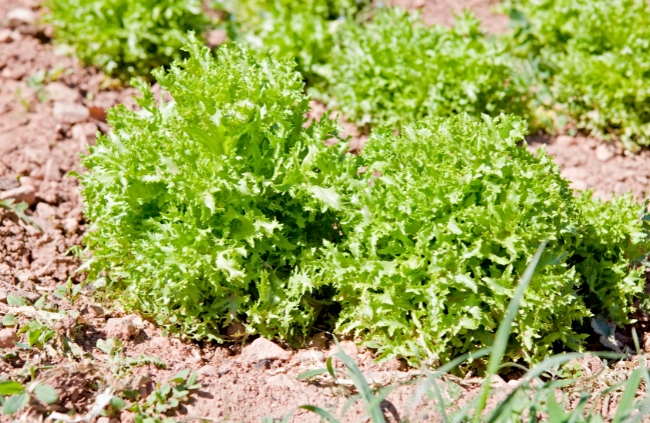
How to Propagate Endives
Endives have a reasonably tough taproot, and it is possible to propagate or resprout the taproot of a harvested endive, but by far the best way to get new plants is from seeds.
Propagating Endives from Seeds
Endives can be sown all year round in temperate parts of Australia, but you want to try to avoid planting young plants in extremely hot weather.
Sow seeds in cooler months, ideally early spring or mid-to-late autumn. They will develop quickly, and some varieties are ready to harvest after just a few weeks as cut-and-come-again leaf crops. Others require more patience.
Method:
- Sow endives into a free-draining seed compost. This can be sieved garden soil, a prepared seedbed, or seed compost bought from a garden centre.
- Sow seeds about 5cm apart in rows 15cm apart.
- Water seeds well, and cover with 0.5cm of compost.
- Germination usually takes around 7 days but can take up to a month in shaded conditions.
- Once germinated, keep the soil moist but not overly wet.
- Once they are growing well, thin seedlings to a minimum of 10cm apart in each row.
Note: Endives can be grown from their taproot, but the results are not quite the same as the small chicons you would expect from other chicory varieties. Instead, these root-grown vegetables should be transplanted and left to grow on into a leafy salad crop.
Ideal Position for Growing Endives
Finding the right spot for your endives can be tricky. These sharp salad crops might grow wild here but they do best and develop better flavours in cooler climates than our own.
Depending on the variety, your location, and the time of year you’re planting endives, you’ll need to tweak your conditions for the best possible harvest. Follow the tips below to make the most of your veggie plot this year.
Soil & Drainage
Endive prefers an open and bright location to grow without much competition, but you will likely recognise its flowers from roadside verges and woodland edges, where it grows in competition with other plants.
For commercial or domestic propagation though, provide endives with open soil and minimum competition from other plants. Dig in plenty of well-rotted manure or compost to enrich free-draining soil in raised beds for the best results.
Light & Temperature
Endive will always produce better crops in temperate climates with changeable seasons. A cool autumn is particularly important for good flavour from varieties like Frisee, but they can be grown all year round in most parts of the country, provided they have good irrigation.
This can be mitigated in warmer climates by fleecing crops to reduce direct sunlight, or planting in the light shade of a low wall or hedge, so sunlight is reduced in autumn and winter by the shadow cast from the barrier.
Planting Endives
When planting endives grown from seed, or bought as plug plants, space them about 15cm apart into a prepared bed. The base of the leaf florette should be just above the soil level so it is never sat in a puddle.
Once planted, drench the ground to ensure good connections between the roots and the surrounding soil. Water about once a week, or whenever the soil begins to dry out.
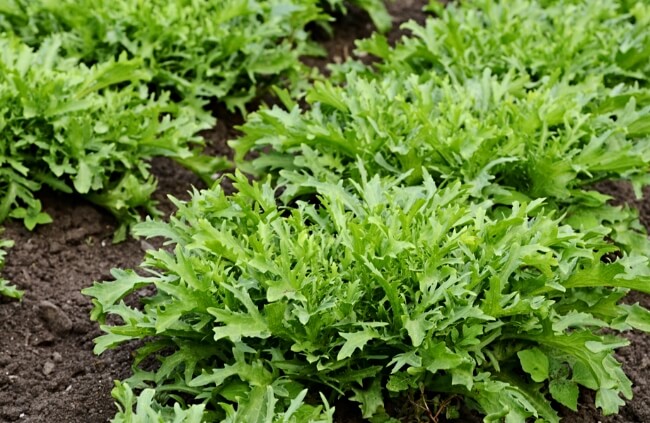
Companion Planting with Endives
There are no particularly useful companion plants for endives, but if you are growing it as a root crop, it can be grown in amongst nearly any other vegetable bed as the foliage will attract slugs and snails. This protects your other crops and acts as sacrificial leaves, but the root continues to grow unharmed, providing a late crop when everything else is finished.
How to Care for Endives
Cut-and-come-again endives need constant harvesting to keep them at their best. The more you pick, the more they produce, and with a bit of extra fertiliser, you can keep them cropping month after month.
Below, I’ll share some of my top tips for caring for endives at home.
Mulching Endives
It is quite rare to suggest mulching salad crops, but endives do actually benefit from a mulch of compost between each row after planting.
There are two reasons for this. The first stems from the fact that endives are relatively low-maintenance plants, and require little nutrition. So mulching between the rows helps to improve the soil structure and add nutrients back into the soil for the next crop.
The second is that endives can be quite difficult to weed between, and the harvestable salad heads are usually shorter than potential weeds. Mulching helps to reduce weed germination in the bed and makes managing your crop much easier.
Feeding Needs
Endive doesn’t need feeding unless the leaves begin to look anaemic. Obviously, this will depend on the variety you're growing as some endives have incredibly pale foliage.
For green cut-and-come-again endives, pale foliage can be a sign that you should add a general-purpose liquid fertiliser to your watering routine, usually due to low nitrogen.
Charlie Carp’s organic fertiliser with added seaweed is ideal for this, and a great all-round addition for most veggies.
Watering Endives
Endives will need watering regularly between late spring and mid-autumn. Weekly watering is about the average, but in very hot locations, your beds might need watering three or four times a week.
Remember to water deeply and generously when you water, and then leave the bed to dry out before watering again. This is a good rule for most salad crops, but particularly useful for tap-rooted salads like endive.
Harvesting & Storing Endives
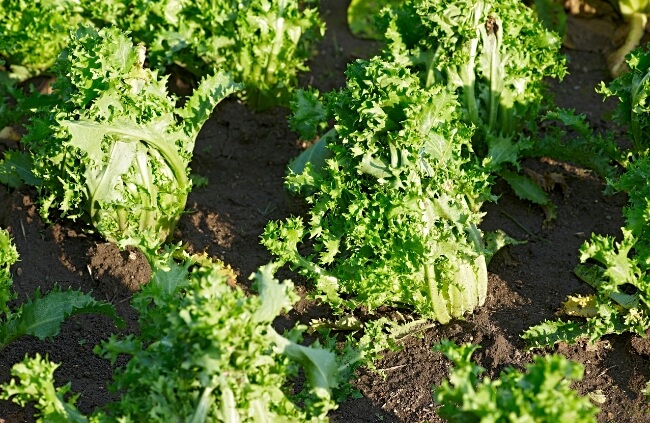
Endives most commonly refer to the leafy salad crops that deliver sharp but thin salad leaves. They can be harvested within a month of sowing directly into your garden beds and can keep cropping until well into early winter.
Avoid the temptation to harvest the earliest leaves. Allow the heads to get to about 10cm across before reducing them by about half each time, picking from the outer leaves in.
Take a few leaves from each plant every time you harvest. Slow, steady harvests help these plants last longer.
Common Problems When Growing Endives
One of the most common problems with endives is with germination temperatures. We often think of endives as quite cold-tolerant crops, and they are, but they can struggle to germinate with temperatures below 20°C.
In cooler climates, cold autumns can cause plants to bolt a few weeks later, essentially tricking them into thinking they’ve had a winter. Temperatures below 5°C for more than a couple of days are known to cause this.
Endive Pests
Endives can fall victim to nearly all common garden pests, but the two that will do the most damage are slugs and snails.
Other than slugs and snails, common sap-suckers like spider mites, aphids, cutworm and thrips can eat young outer leaves - though these tend to be isolated to those outermost leaves, and can usually be removed by disposing of the affected foliage. Inner leaves can then be harvested and rinsed as usual.
Slugs and snails aren’t easy to get rid of in a salad bed. It’s basically their dream banquet. Encouraging frogs and small mammals into your garden is the most reliable way to reduce slug populations, but you could try beer traps or sprinkling coffee grounds around each plant.
Endive Diseases
I could write an entire article about the diseases that endives can be affected by, but I would be dishonest if I said any of them were likely to cause serious issues.
Root rot and crown rot are the only major problems, and they are nearly always caused by over-watering or poor drainage. Other than that, damping off at the seedling stage can be common, but proper ventilation usually prevents it.
Basically, if you keep endives moist but not wet, and provide reasonable ventilation and space rows properly you're highly unlikely to have any serious disease problems with endives.
Frequently Asked Questions About Endives
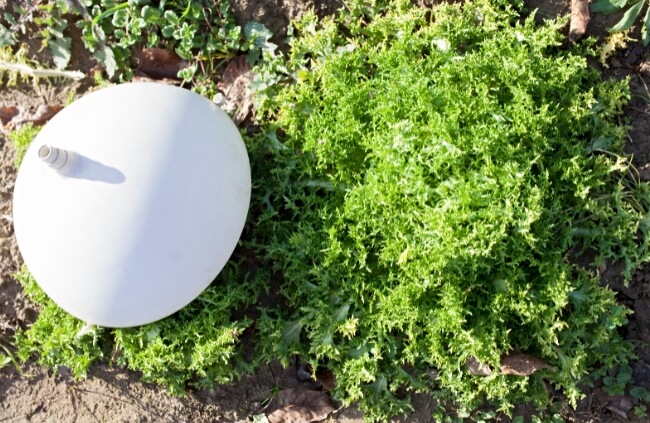
Are endives hard to grow?
Endives are not hard to grow, and fairly low maintenance once they get going, but they are tricky to germinate, and getting the soil conditions just right is a balance between free-drained and poor that can sometimes be hard to achieve.
How long does it take to grow endives?
Most endive varieties are ready to harvest after around 60 days from sowing. They are ready to harvest as soon as they look big enough to pick.
Can you grow endives in pots?
Endives grow well in pots but dry out quickly, so will need more regular watering. Prepare soil and compost for pots and containers just as you would for raised beds or the ground.
Is endive an annual or perennial?
Endive is a general term for a wide variety of crops in the Cichorium genus, containing a mix of annual plants, perennials and biennial plants. The majority are perennials with energy-rich tap roots, and both perennial and biennial varieties flower in their second year so should be harvested as a salad crop in their first year.
Can you eat endives raw?
Endive is best enjoyed raw but can be pan-fried, griddled or barbequed for a fuller flavour, which also helps to reduce the bitterness of some varieties.
Wrapping Up Our Endives Growing Guide
Endives are remarkable plants. Just imagine a fresh and crisp salad with endive leaves, garnished with edible blue endive flowers, and a Cichorium root beer on the side. That’s a full meal pulled together from one plant.
Besides the edible possibilities, endives are perfect for creating a pollinator paradise in your backyard. When your endive flowers, it’s an epic event for the gardener and the pollinator.
So if you can resist the urge to pull up the roots after your initial harvest, you’ll have a space filled with the most dazzling blue flowers and very happy bees next season. There’s no time to wait, dive right into growing endives.
Published on August 1, 2025 by Maisie Blevins
Last Updated on August 9, 2025




